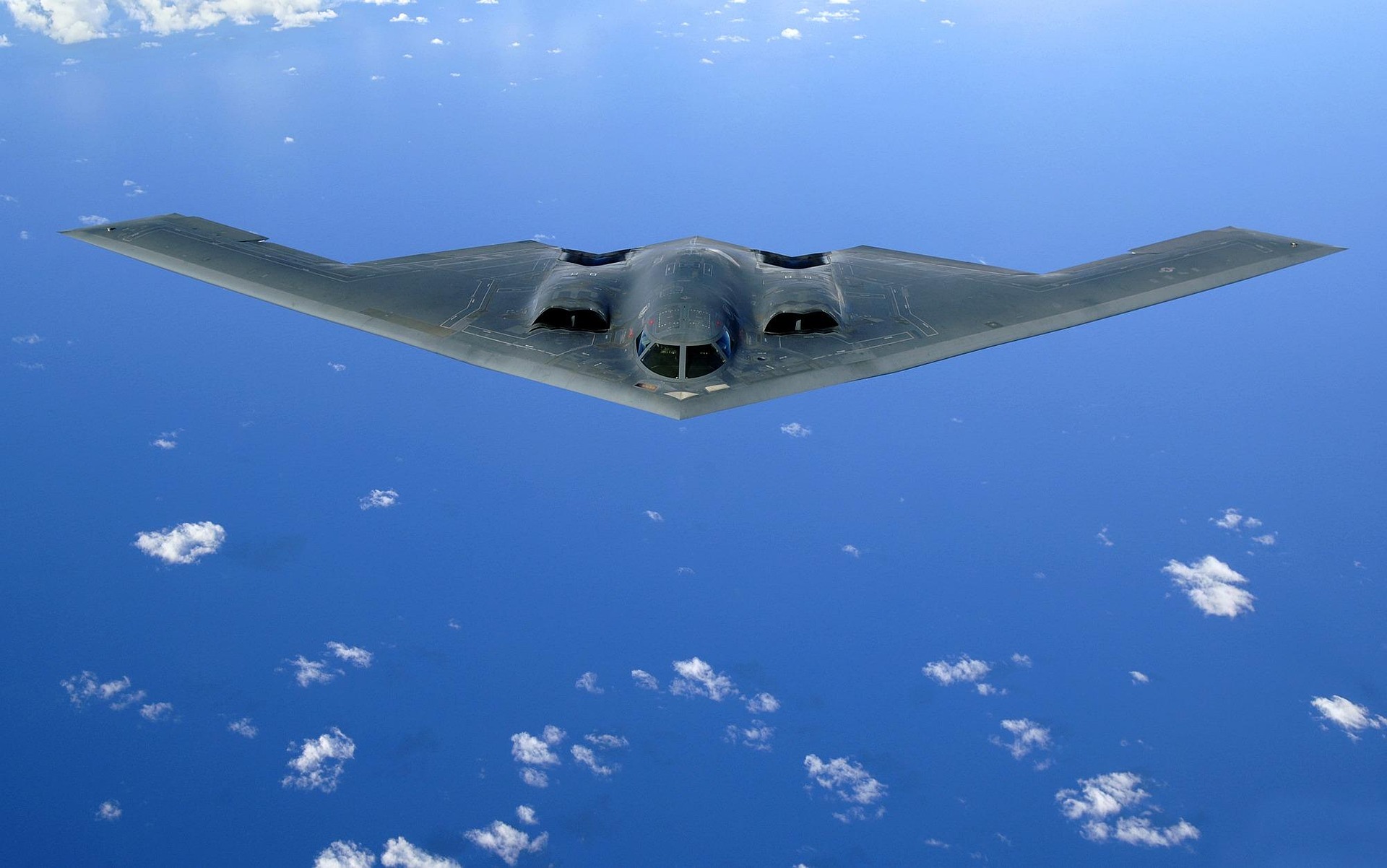The B-2 bomber aircraft is making headlines after participating in attacks on Iranian nuclear sites. This in-depth article explains the full history, design, stealth technology, and combat capabilities of the world’s most advanced and expensive bomber. Learn how it evades radar, defeats heat-seeking missiles, and carries out missions undetected across the globe.
B-2 Bomber Aircraft Make Global Headlines After Strikes on Iranian Nuclear Facilities
B-2 bomber aircrafts are once again the talk of the town after recent high-profile strikes on Iranian nuclear facilities. As the world watches these operations with both awe and concern, many are curious to know how this aircraft operates with such precision and invisibility. In this detailed article, we dive deep into everything you need to know about the B-2 Spirit stealth bomber — from its secretive origins to its cutting-edge technology that makes it almost untouchable in modern warfare.
The B-2 Spirit bomber aircraft is one of the most extraordinary aircraft ever built, known for its unique ability to evade even the most sophisticated missile systems. At first glance, its massive wingspan, nearly the size of a football field, seems impossible to hide. Yet, on an enemy radar, it appears no larger than a tiny insect. This capability makes it one of the most formidable weapons in the world, with a price tag of several billion dollars, making it the most expensive aircraft ever developed.
The journey to create the B-2 Spirit began after a significant incident that embarrassed the United States on the global stage. On May 1, 1960, a Lockheed U-2 spy plane, operated by the CIA, took off from Pakistan’s Peshawar Airbase on a secret mission to gather intelligence over the Soviet Union. The Cold War was at its peak, and both superpowers were constantly trying to outdo each other in technological advancements.
The U.S. believed that its U-2 could fly at altitudes beyond the reach of Soviet missiles, at 80,000 feet. However, once the aircraft entered Soviet airspace, it was quickly detected by their radar systems. Though initial fighter jets and missiles failed to reach its altitude, the Soviets eventually succeeded by launching their S-75 Dvina missile, which struck the U-2 perfectly.
This event shocked America, exposing vulnerabilities in its air defense strategy. The incident led to severe diplomatic embarrassment when the Soviets showcased the captured pilot and aircraft to the world. This loss prompted both the U.S. and USSR to intensify their defense systems.
The Soviets developed highly advanced surface-to-air missiles, such as the S-300, capable of targeting aircraft from over 100 kilometers away. A U.S. Air Force general even admitted that sending a B-52 bomber into Soviet airspace was like throwing a stone into a beehive.
In response, the U.S. initiated the Advanced Technology Bomber (ATB) program in 1978. The goal was to create a bomber that could penetrate Soviet airspace undetected, deliver its payload, and return safely. The B-2 Spirit was born from these requirements, with its first flight in 1989 and public reveal in 1997.
The most remarkable feature of the B-2 Spirit is its stealth capability. Its entire design is engineered to deflect radar signals in ways that prevent them from returning to the source. The absence of vertical tail fins, which typically reflect radar waves like mirrors, contributes significantly to its stealth. Its unique zigzag edges further scatter radar waves away from their origin, making detection incredibly difficult.
Adding to its stealth is a secret radar-absorbent coating that fully absorbs incoming radar signals. This classified coating makes the B-2 virtually invisible to radar. Its radar cross-section is astonishingly small at only 0.0001 square meters. To put this in perspective, while a B-52 bomber appears on radar like a two-bedroom apartment, an F-15 looks like a small room, a JF-17 like a single bed, and a Rafale like a large pillow. In contrast, the much larger B-2 appears no bigger than a fly.
The B-2 doesn’t just evade radar; it also eludes infrared and heat-seeking missile systems. Its engines are concealed within the body, and the exhaust gases are cooled and mixed with ambient air before release, drastically reducing its heat signature.
An F-16 jet can be detected by infrared surveillance from 100 kilometers away, while a B-2 remains invisible until it comes within 10 kilometers, though it rarely flies at such low altitudes. It can fly at 15,000 meters or as low as 500 feet, taking advantage of thin atmospheric layers to improve fuel efficiency and extend its range.
Beyond passive stealth, the B-2 employs advanced electronic countermeasures (ECM). These systems analyze enemy radar frequencies and send back false signals, creating multiple phantom images of the B-2 on enemy radars. Only the specific radar that detects it receives these false signals, preventing widespread suspicion among enemy forces.
Constructed primarily from carbon graphite composite materials, the B-2 is meticulously assembled with precision akin to a Swiss watchmaker. It can carry an impressive payload of 18,000 kilograms, including 80 GPS-guided JDAM bombs, 16 B83 nuclear bombs, and 16 AGM-158 JASSM stealth cruise missiles. All weapons are housed internally to preserve its stealth profile during flight.
The B-2 boasts an operational range of 11,000 kilometers on a full tank, enabling missions from the U.S. to Russia and back. With mid-air refueling, it can reach any location globally. During the Afghanistan War, a B-2 flew from Missouri, traveled 9,500 kilometers to strike targets in Afghanistan, and returned without landing, staying airborne for 45 continuous hours with only one mid-air refueling. It has also been deployed in Serbia (1999), Iraq (2003), and Libya (2011).
The B-2 can operate under any weather condition and navigate even if GPS satellites are disabled, using backup systems that track stars and advanced sonar cameras to avoid obstacles. Its stability, however, heavily relies on its onboard computer systems, as its flying wing design lacks conventional control surfaces. The computer constantly adjusts its pitch and roll, with pilots primarily issuing commands that the computer executes.
Given its cutting-edge technology, the B-2 comes with a hefty price tag. Only 21 units have been built, each costing billions of dollars, surpassing the GDP of many nations. Exclusively operated by the United States, there are no plans to export this technology. Its fuel consumption is also massive, burning approximately half a million dollars’ worth of fuel per hour compared to a commercial jet’s few thousand dollars.
Maintaining the B-2 is an intricate process. After every mission, it undergoes a soft wash, followed by reapplication of its secret stealth coating. Every part is thoroughly inspected for even the slightest dents or imperfections, as even a mosquito-sized dent can compromise its stealth capabilities.
The B-2 Spirit remains a marvel of modern military aviation, combining revolutionary design, advanced stealth technology, and unmatched strategic capabilities. It continues to symbolize American air superiority and technological prowess in an ever-evolving global defense landscape.
Disclaimer:
This blog post is intended for informational and educational purposes only. The content is based on publicly available information and analysis. We do not support or promote any military conflict or action. All military operations referenced are based on reports and do not reflect any endorsement. Sensitive defense technologies are discussed purely from a technical and historical perspective.

